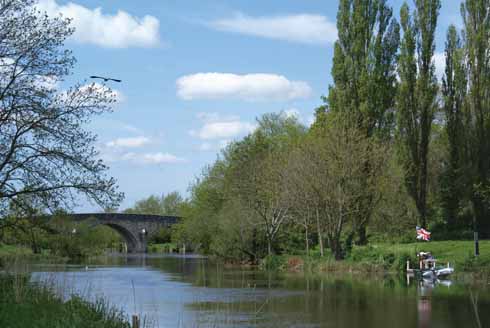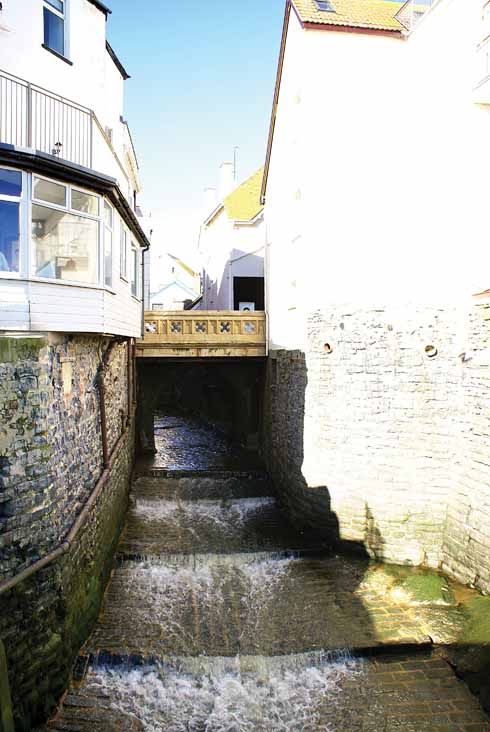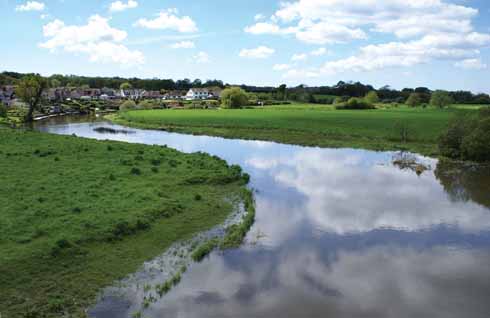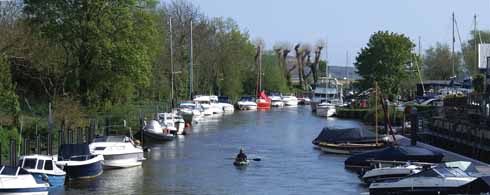Spring to Sea
From the broad and sinuous Stour to the Lim, the Wey and the Frome, Dorset is blessed with a variety of rivers, as Michael Handy explains
Published in January ’15

A less-often seen view of the Frome from South Bridge in Wareham, looking westwards rather than the more familiar view towards the Quay
It is true, and has always been true – from the earliest of human times to the present day – that for us at least, there is no life without water. It is an oft-forgotten fact, though, that long before people had well-water, they had running water: it was called a stream or a river.
Dorset’s earliest settlements sprang up along and around them, and one only has to look at how many valley villages there are to see how true this is. American novelist Mark Helprin, who cites East Stour’s Henry Fielding as one of his influences, wrote that: ’a good river is nature’s life work in song’.

The Frome is crystal clear and, during the summer months may be just a single stream, which can (between the permitted dates) be forded to travel from east of West Stafford (where this shot was taken looking west towards Dorchester) to Lower Norris Mill Farm.

The view of the Stour eastwards from Blandford Bridge towards the Weir and pedestrian suspension bridge
From the clear chalk streams to the cloty Stour, from the Lim and Char in the west, to the Moors and Avon in the east, the Wey in the south to the Lodden and Shreen in the north, a huge number of brooks, streams and rivers flow through the county, most of them (broadly speaking, as a river will always take the path of least resistance) flow from north to south for a while before eventually jinking east. Those in the very west flow west, south-west or even north, while the Winterbornes only flow in the wet seasons of the year.
Without Dorset’s rivers, we would miss a lot of Dorset’s place names from the aforementioned Winterbornes as well as the Tarrants, Stours (and Sturs), Piddles (and Puddles); we can also thank the Asker and Sydling, the Bride (Little & Long Bredy), but not the Brit (which takes its name from Bridport, not vice-versa), Cerne (Abbas), Lim (Lyme Regis), and Lydden (Lydlinch). We would neither have the fair Frampton, nor the fine trio of Fromes St Quintin, Vauchurch and Whitfield without rivers. Of course, we would not able to mouth certain place names without the Bourne, the Char and the Wey, nor would two religious towns have been ‘born’ without the rivers Sher and Win, the latter of which’s Celtic origin word for stream also provides the origin of Winfrith, Wynyard as well, of course, as Wimborne St Giles… although, confusingly, the river Win is known as the Allen in that part of Dorset.
So, in conclusion, one might ask – in the manner of the revolutionaries in Life of Brian – ‘apart from giving us life and the names of seemingly half the county, what have Dorset’s rivers ever done for us?’

After the River Wey has tarried a while at Radipole Lake, it makes its exit to the sea through the marina at Weymouth, under the Town Bridge and then out between the port and Nothe Fort
The answer lies in the location of most of the county’s breweries, past and present: on the banks of rivers. ◗

The Stour and Avon combine between Wick and Stanpit in Christchurch Harbour, before passing through the narrow strait between Little Haven and Mudeford spit and out to Christchurch Bay






